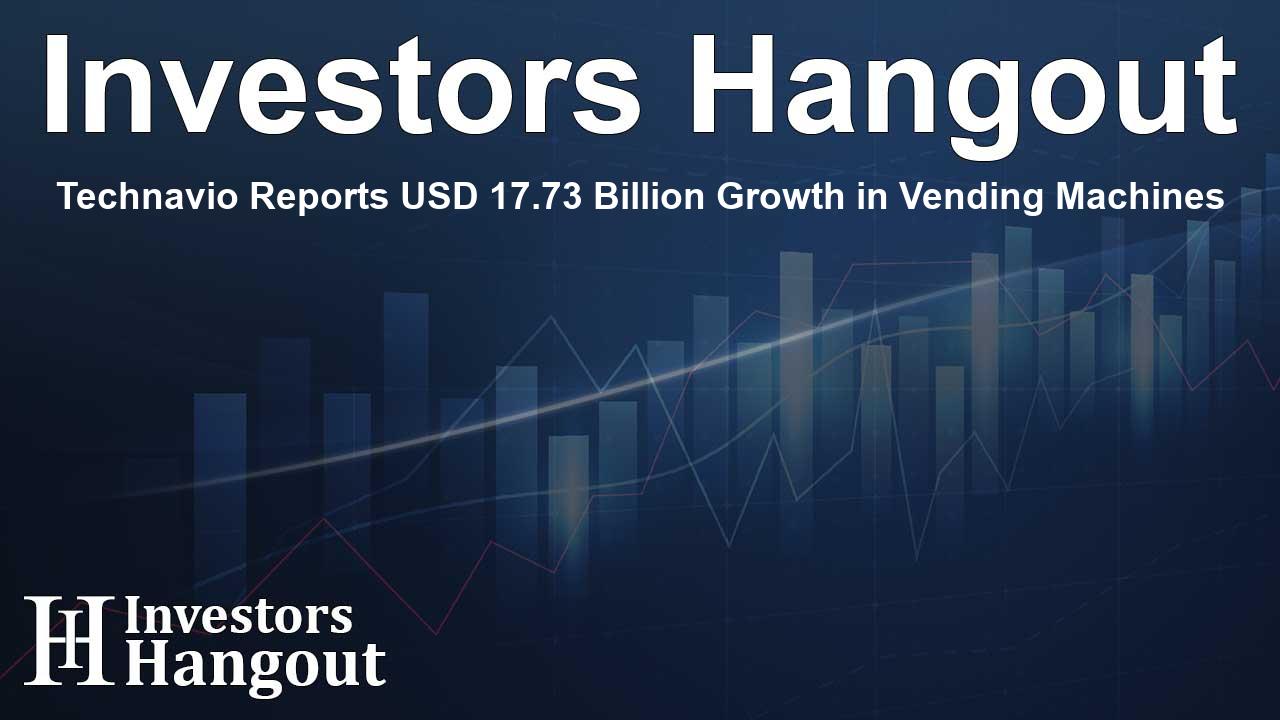Technavio Reports USD 17.73 Billion Growth in Vending Machines

Innovation and Growth in Vending Machine Market
The vending machine market is undergoing significant transformation driven by innovative technologies and consumer demands. According to recent estimates, this sector is poised to grow by an impressive USD 17.73 billion between 2024 and 2028. This growth is largely attributed to the surge in demand for cashless vending machines and the growing integration of artificial intelligence technologies. Market analysis indicates a compound annual growth rate (CAGR) of 19.74% during this period.
Shifting Trends and Market Dynamics
The evolution of vending machines has seen them become a staple in various business environments, catering to customers' needs for convenience and immediate service. A notable trend is the shift towards healthier snack and beverage options, reflecting a broader societal movement towards nutritious eating. Modern vending machines are now found in diverse locations such as schools, offices, shopping malls, and airports, offering products that appeal to health-conscious consumers.
Cashless Payment Revolution
With the increased preference for cashless transactions, vending machines are adapting by offering more payment options including credit and debit cards, as well as mobile payment solutions. The integration of touch screens and modern payment technology is making it easier for consumers to purchase items on-the-go. In addition to traditional snacks and beverages, items like bottled water, low-calorie sodas, and even freshly prepared meals are becoming common offerings.
Challenges Facing Vending Machine Operators
Despite promising growth, the vending machine sector faces challenges that could hinder expansion. High initial investments in intelligent vending machines and regular maintenance costs pose a financial burden for operators. Moreover, ongoing technological advancements necessitate further investments in software and hardware upgrades to keep servers competitive. As operators strive to meet rising consumer expectations, the need for innovation remains paramount.
Importance of Data Collection
Operators are increasingly leveraging data analytics to optimize their offerings and improve sales performance. By tracking purchasing behaviors, retailers can tailor product selections to meet local demand and enhance consumer satisfaction. This data-driven approach allows businesses to anticipate trends and stock inventory accordingly, minimizing waste and maximizing profitability.
The Role of AI in Vending Machine Advancements
Artificial intelligence is becoming a key component in advancing vending machine technology. Machine learning algorithms analyze consumer interactions with vending machines, enabling operators to better understand consumer preferences and adjust offerings dynamically. The Coca-Cola Company, for instance, has adopted AI-driven vending machines that not only accept multiple payment methods but also notify managers when stock levels are low, ensuring optimal inventory management.
Segmentation of the Vending Machine Market
Market segmentation can be categorized into product types, distribution channels, and geographic regions. The vending machine market includes low-end and intelligent vending machines, catering to a wide variety of consumers. Distribution channels encompass both offline and online mechanisms, which help to expand accessibility. Geographically, this market is segmented into regions such as North America, Europe, APAC, South America, and the Middle East and Africa.
Future Outlook for the Vending Machine Industry
The future of the vending machine industry appears bright, driven by the demand for convenience in fast-paced urban environments. As consumer preferences evolve, vending machines are expected to continue integrating advanced technologies, including AI and IoT solutions, to enhance customer experiences. Furthermore, with urbanization continuing to rise, the need for effective on-the-go solutions will only amplify the demand for convenient vending options in various settings.
Frequently Asked Questions
What is the expected growth of the vending machine market?
The vending machine market is expected to grow by USD 17.73 billion from 2024 to 2028.
How is cashless technology impacting vending machines?
Cashless technology is driving growth by providing consumers with more convenient payment options, enhancing the overall user experience.
What role does AI play in vending machine innovation?
AI helps operators understand consumer preferences and optimize inventory management, leading to improved sales and customer satisfaction.
What types of products do modern vending machines offer?
Modern vending machines are increasingly offering healthier options, including low-calorie snacks, beverages, and even freshly prepared meals.
Which companies are leading the vending machine market?
Key players in the vending machine market include Azkoyen SA, Bianchi Industry Spa, Compass Group Plc, and The Coca-Cola Company, among others.
About The Author
Contact Riley Hayes privately here. Or send an email with ATTN: Riley Hayes as the subject to contact@investorshangout.com.
About Investors Hangout
Investors Hangout is a leading online stock forum for financial discussion and learning, offering a wide range of free tools and resources. It draws in traders of all levels, who exchange market knowledge, investigate trading tactics, and keep an eye on industry developments in real time. Featuring financial articles, stock message boards, quotes, charts, company profiles, and live news updates. Through cooperative learning and a wealth of informational resources, it helps users from novices creating their first portfolios to experts honing their techniques. Join Investors Hangout today: https://investorshangout.com/
The content of this article is based on factual, publicly available information and does not represent legal, financial, or investment advice. Investors Hangout does not offer financial advice, and the author is not a licensed financial advisor. Consult a qualified advisor before making any financial or investment decisions based on this article. This article should not be considered advice to purchase, sell, or hold any securities or other investments. If any of the material provided here is inaccurate, please contact us for corrections.
